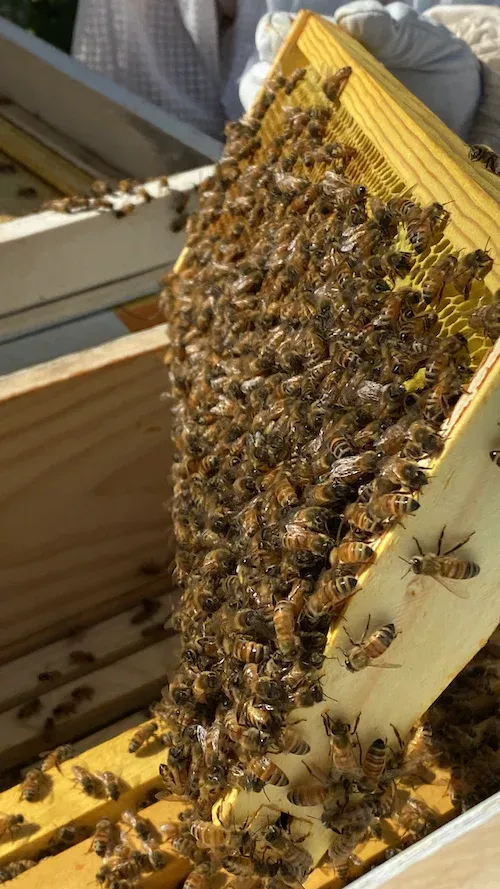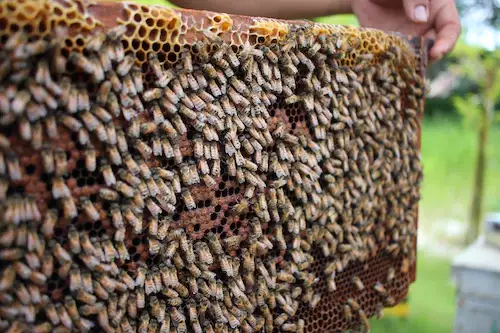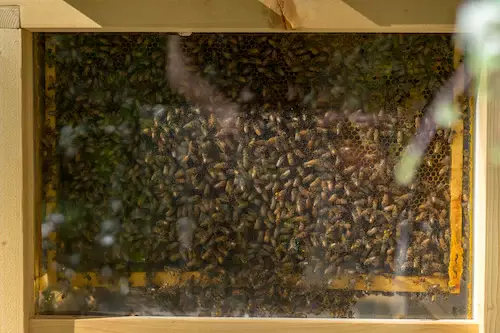Solid vs. Screened Bottom Boards: the Best One For Your Hive
Bottom boards are an important part of beehives because they give the structure strength and stability. They can help protect your hive from pests and other environmental hazards. Choosing the right bottom board for your hive is essential.
Solid bottom boards provide a barrier between the hive and the ground, preventing pests from entering. Screened bottom boards allow for better ventilation, but can also let in pests. Choose the option that best meets the needs of your hive, considering the environment and the pests in your area.
Solid or screened—each type of bottom board for your beehive has pros and cons. Discover the differences between solid and screened bottom boards and find out which one is best for you and your hive.
Summary
- A solid bottom board is made of either wood or plastic, while a screened bottom board has mesh.
- A solid bottom board can limit ventilation, while a screened bottom board has better ventilation and prevents the formation of mold.
- A screened bottom board is more expensive when it comes to additional materials than a solid bottom board.

On this page:
Solid Bottom Boards
A solid bottom board is an important part of any beehive. It is the base of the hive and protects it from the elements and predators. It also helps regulate the temperature and humidity inside the hive.
The solid bottom board is typically made of either wood or plastic and has a screened floor. This allows for ventilation, while still providing a solid foundation for the bees. It also provides a landing pad for the bees when they return to the hive.
The solid bottom board should be raised off the ground to provide better air circulation and keep the hive from becoming damp. It should also be reinforced with screws or nails to make it more stable.
A solid bottom board is a type of bottom board used in beehives that are fitted with solid boards rather than mesh or slatted boards. This type of board offers several advantages, such as providing a stable platform for the hive. However, it also has some drawbacks, including hindering ventilation and increasing the risk of parasites and disease.
Pros of solid bottom boards
- Provides a stable platform for the hive, reducing the risk of it toppling over.
- Allows for the easy removal of dead bees and debris.
- Can help prevent pests such as mice and rats from entering the hive.
Cons of solid bottom boards:
- Can limit ventilation, leading to increased humidity and a higher risk of disease and parasites.
- Can attract ants, which can be difficult to control.
- Can be difficult to inspect or manipulate the hive when the boards are in place.

Screened Bottom Boards
A screened bottom board is a type of bottom board used in beehives. It is made of wood and has a wire mesh screen on the bottom. The mesh allows air to flow freely while preventing pests and mites from entering the hive. The mesh also provides a place for the bees to land and take off.
Screened bottom boards are becoming increasingly popular among beekeepers, as they help to reduce the number of pests and mites in the hive. These pests and mites can have a huge impact on the health and productivity of the hive.
Screened bottom boards also reduce the amount of cleaning needed, as the mesh allows debris to fall out of the hive, rather than collect on the bottom board. The screened bottom board also serves as an effective mite-monitoring tool. As the mites climb onto the mesh to enter the hive, beekeepers can count the number of mites and monitor the overall health of the hive.
Overall, a screened bottom board is an important tool for beekeepers. It helps improve the health of the hive and reduces the amount of cleaning and maintenance needed.
Pros of screened bottom boards:
- Helps reduce the number of mites and other pests in the beehive. They allow for better ventilation, which can help keep the hive healthy and prevent mold from forming.
- Allows better inspection of the hive. Beekeepers can easily lift the board and check for hive pests and diseases.
- Helps regulate the temperature inside the hive, which can help the bees survive during extreme weather conditions.
- Helps keep the hive dry, which prevents the bees from becoming dehydrated.
Cons of screened bottom boards:
- Can be difficult to clean, which means that beekeepers need to clean them regularly to prevent the buildup of debris and pests.
- Can also be difficult to inspect as they are not as visible as solid bottom boards.
- Can also be more expensive than solid-bottom boards, as they require additional materials and labor to construct.
- Can also be more difficult to transport as they are not as durable as solid boards.
Choosing Between Solid vs Screen Bottom Boards
When choosing between solid and screened bottom boards for use in beekeeping, there are a few factors to consider. Solid bottom boards are simpler and easier to clean, and they provide more protection against pests, such as moths and small rodents.
Screened bottom boards, on the other hand, provide better ventilation, allowing the hive to remain cool during the hot summer months. They also allow for more efficient removal of dead bees and other debris.
The decision ultimately comes down to the individual beekeeper and their preferences. If the beekeeper desires better ventilation, they may opt for a screened bottom board. If they prefer simpler maintenance and more protection against pests, they may select a solid bottom board. Ultimately, both types of bottom boards serve the same purpose, and the decision is largely a matter of preference.
The Importance of Using Bottom Boards
Bottom boards are an essential component of beehives, as they provide support and stability to the structure. Here are some of the benefits you can gain by having either solid or screened bottom boards.
- Bottom boards help provide stability to a beehive by supporting the weight of the box and its contents.
- Bottom boards provide a barrier between the ground and your beehive, keeping out pests and predators.
- Bottom boards help regulate the temperature and humidity of the hive, creating a more comfortable environment for the bees.
- Bottom boards can be used to monitor the hive’s mite population, helping beekeepers keep an eye on their hive’s health.
- Bottom boards can be used as an entrance reducer, helping to control the number of bees entering and exiting the hive.
- Bottom boards can be used as a platform for tools, helping beekeepers keep their equipment organized and accessible.
- Bottom boards can help prevent swarming by providing an additional space for honeybees to build comb and store honey.

When To Use Bottom Boards
Solid bottom boards are generally used during the winter months to provide additional insulation between the hive and the ground. They are also useful for keeping out pests such as mice and rats. During the summer months, however, solid bottom boards should be removed to provide additional ventilation and to help prevent the hive from overheating.
Screen bottom boards are used during the summer months to provide additional ventilation and to help keep the hive cool. They also allow for the entrance of beneficial pollinators and help reduce the number of pests. Screen bottom boards should be removed during the winter months to provide extra insulation and to help prevent the hive from getting too cold.
Overall, using both solid and screen bottom boards throughout the year can help ensure that your hive is well protected from pests and other environmental issues. This can help to keep your bees healthy and productive throughout the year, and can also help to keep your honey production at optimal levels.
